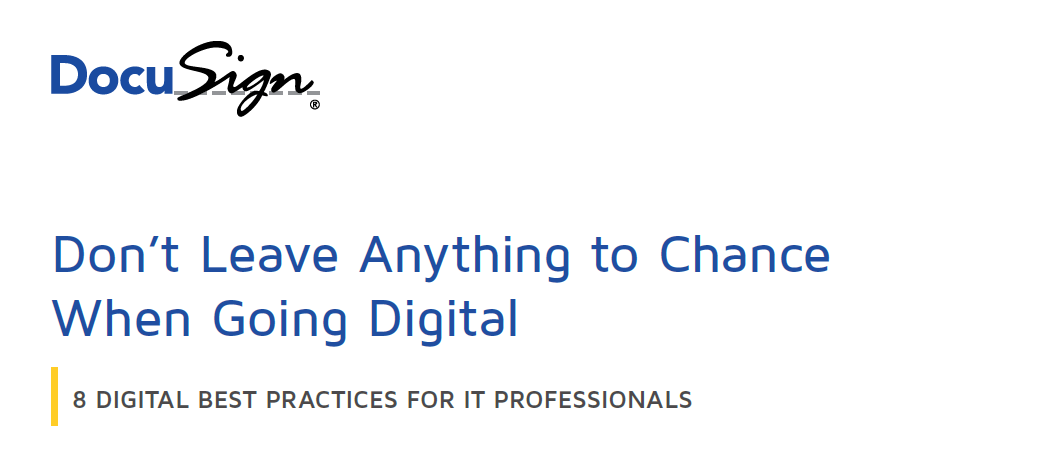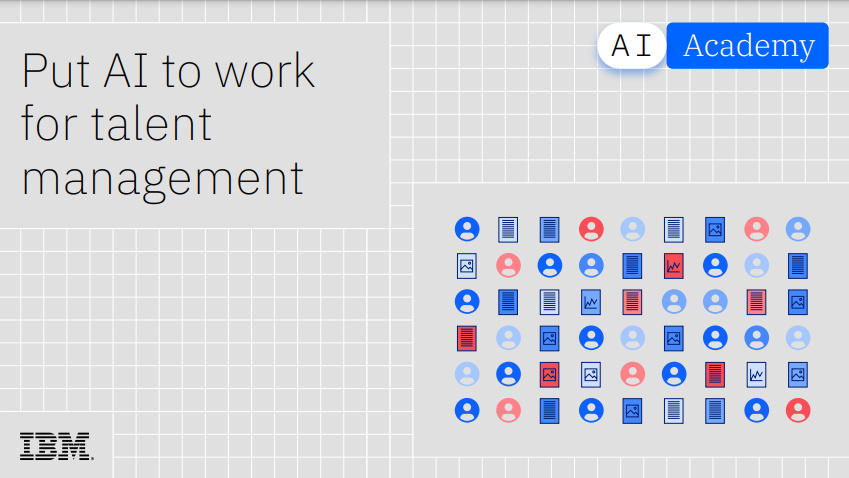How do I keep my team’s skills current?
Employers have a responsibility to keep their staff’s skills up to date and as training becomes more engaging, it’s easier to do so than ever

Why do staff resign? Some find more interesting propositions elsewhere. Others are tempted by better pay. Everyone retires, eventually. But Zoe Morris, president at Frank Recruitment Group, points out one more factor: “One of the most common reasons for professionals wanting to move on is that their current employer isn’t supporting their development.”
It shouldn’t be hard. Few people are better placed to decide where a team member’s skills are lacking than that member themselves. Listen to what they say and give them the time they need to pursue those areas; yet so many managers still get it wrong.
“Your most valuable workers are ingrained in their own ecosystems and know the niches and skill sets they want to investigate and delve deeper into,” Morris says. That’s why it’s key to “schedule time where they can self-learn, and facilitate the costs involved where possible. Investing time as well as money into your staff’s development is a sure-fire way to drive better retention.”
In short, staff need to feel valued – and helping them to sharpen their skills is one of the most effective ways to do that. In the technology sector, says IT outsourcing service provider Harvey Nash, 95% of staff are working to develop new skills – often in their own spare time.
Yet significant knowledge gaps still need to be plugged. More than half of all organisations struggle with a lack of in-house skills for legacy technology, according to research by Park Place Technologies. A similar number believes the skills gap will impact their sector’s ability to adopt new technologies, and one in ten isn’t confident in its IT infrastructure at all. That’s past, future and present technology equally impacted. Investing in staff development has never been more important.
Skills sharing
Docebo mixes traditional course building with Coach & Share, a social learning platform it introduced in 2016 to facilitate in-house knowledge sharing. By involving the learner in the process of learning, said Docebo product marketing manager Matt Powell, “social learning” – effectively, self-publishing what you know and allowing others to comment on it – leads to higher levels of engagement.
Coach & Share “allows staff to contribute, comment, ask questions and develop subject matter experts internally,” says Powell. “From an L&D manager’s perspective, [getting this kind of engagement] has always been a challenge. Traditionally, learning has been seen as something that staff have to do but we want people to want to learn, and then apply that learning to their job.”
Get the ITPro daily newsletter
Sign up today and you will receive a free copy of our Future Focus 2025 report - the leading guidance on AI, cybersecurity and other IT challenges as per 700+ senior executives
Powell is keen to point out that Docebo’s offering is more than an educational Facebook for Business: it’s underpinned by a high level of artificial intelligence (AI), which both increases the value of the information put into the system and helps managers and team members to identify the most appropriate content.
Coach & Share, which is one part of Docebo’s wider offering, “creates content creators internally by establishing subject aspects within different parts of the business,” says Powell – and much of this is done passively, freeing those experts from any obligation to step aside from their existing responsibilities to manage their colleagues’ learning.
Describing the process as “taking what you’re learning, applying it within the flow of work and sharing the knowledge”, Powell outlines a process whereby a staff member who encountered a problem in their usual course of work would pull out their phone and record how they fixed it – while in the very process of doing so. Other than adding a short commentary or introduction, this shouldn’t greatly extend the time required to remedy the situation. Once they upload the content to Coach & Share, the AI that underpins Docebo’s offering applies what it considers the most relevant tags automatically, helping other team members find it should they come across a similar problem in the future.
“If that piece of content starts to become very relevant to other people in the company, the L&D manager can apply it to their formal learning programme, too,” Powell said – and here, the potential for personalisation, facilitated by AI, comes to the fore. “The system will suggest modules you need to complete based on modules you’ve already worked through. It can also eliminate steps. The learning path isn’t linear as it used to be: if the system can see that you’ve demonstrated a certain level of knowledge in a particular area, it might consider that you don’t need to take courses B, C and D. You can go from course A right to course E to accelerate the learning process.”
Training and gamification
If the popularity of sites like Quora, Mumsnet and Money Saving Expert tell us anything, it’s that knowledge sharing is hard-wired into the human psyche. As is a preference to learn through doing, rather than by rote.
RELATED RESOURCE

8 digital best practices for IT professionals
Don't leave anything to chance when going digital
When James Hadley, CEO of Immersive Labs, taught students at GCHQ’s Cyber Summer School, he noticed that the courses with the highest success rate were the ethical hacking challenges featuring games. The students were presented with a problem; their task was to solve it, and thus keep the country’s territory, infrastructure and citizens safe. It wasn’t a paper and pencil exercise, but an in-at-the-deep-end simulation.
The challenges were the most successful modules as, according to Immersive Labs’ chief cyber officer, Max Vetter, “the way [we’ve traditionally taught] cyber doesn’t really fit the way people learn cyber”. The challenges, on the other hand, did.
GCHQ requires Cyber Summer School attendees to be natural problem solvers with experience of coding in at least one language. Such requirements attract a particular type of applicant. A lot of attendees already had a lot of experience doing “cyber” in their own time – a very different environment to the lectures and notes-based approach of a traditional classroom-centric course. Yet, as Vetter pointed out, relying on bedroom tinkering alone isn’t appropriate when hiring staff to work on the systems of a multi-billion-pound conglomerate – or the security of a nation.
So Hadley founded Immersive Labs with the aim of developing a more engaging form of training – one that’s better-suited to the course content. Less than two years later, Immersive Labs’ clients include KPMG, BAE Systems, Goldman Sachs and the NHS.
The key to Immersive Labs’ success is in its name. Rather than presenting candidates with a series of written modules, it simulates attacks and other problems, allowing candidates to fix them in a sterile environment.
Organisations subscribe to its platform as they would to virus updates and cloud-based DDoS protection, and it’s open around the clock, every day of the year, giving users the chance to tackle emergent threats within hours. “When WannaCry came along, we got a module on it live within four hours,” Vetter said. “Our users could detonate it in a safe environment and analyse it before it hit their networks. The difference between that and a traditional training course is that the course might take six months to put together, by which point it’s already out of date.”
Almost half of its users log on outside of traditional working hours, which, says Vetter, demonstrates its ability to promote organisational diversity. Women in the workforce are more likely than their male counterparts to be working from home or part-time, in which case the anywhere-anytime aspect of online training is a perfect fit.
The changing face of training
What Immersive Labs and Docebo demonstrate is that, while a traditional LMS still has its place, the most engaging and effective ways to keep a team’s collective skills current are changing.
RELATED RESOURCE

8 digital best practices for IT professionals
Don't leave anything to chance when going digital
L&D managers need to look beyond training days and give staff the tools they need to retain and employ what they’ve learned – particularly if, as is increasingly the case, they’re expected to do so in their own time.
That’s unpaid hours for which staff ought to be repaid, at the very least, through engaging, relevant content.
Nik Rawlinson is a journalist with over 20 years of experience writing for and editing some of the UK’s biggest technology magazines. He spent seven years as editor of MacUser magazine and has written for titles as diverse as Good Housekeeping, Men's Fitness, and PC Pro.
Over the years Nik has written numerous reviews and guides for ITPro, particularly on Linux distros, Windows, and other operating systems. His expertise also includes best practices for cloud apps, communications systems, and migrating between software and services.
-
 Bigger salaries, more burnout: Is the CISO role in crisis?
Bigger salaries, more burnout: Is the CISO role in crisis?In-depth CISOs are more stressed than ever before – but why is this and what can be done?
By Kate O'Flaherty Published
-
 Cheap cyber crime kits can be bought on the dark web for less than $25
Cheap cyber crime kits can be bought on the dark web for less than $25News Research from NordVPN shows phishing kits are now widely available on the dark web and via messaging apps like Telegram, and are often selling for less than $25.
By Emma Woollacott Published
-
 IBM pledges support for UK government cyber skills program
IBM pledges support for UK government cyber skills programNews The CyberFirst Girls competition is aimed at increasing diversity in the cyber security workforce
By Emma Woollacott Published
-
 AI skills training can't be left in the hands of big tech
AI skills training can't be left in the hands of big techNews Speakers at Turing's AI UK conference lay out challenges to AI skills readiness
By Nicole Kobie Published
-
 Tech talent shortages mean firms are scrapping traditional recruitment strategies
Tech talent shortages mean firms are scrapping traditional recruitment strategiesNews With more than half of enterprise leaders worried about future skills shortages, many organizations are turning to a range of new techniques to expand potential talent pools.
By Emma Woollacott Published
-
 The UK’s AI ambitions face one major hurdle – finding enough home-grown talent
The UK’s AI ambitions face one major hurdle – finding enough home-grown talentNews Research shows UK enterprises are struggling to fill AI roles, raising concerns over the country's ability to meet expectations in the global AI race.
By Emma Woollacott Published
-
 Businesses know they have major skills deficits, but less than half plan on hiring more women
Businesses know they have major skills deficits, but less than half plan on hiring more womenNews Male IT leaders remain complacent about gender diversity despite widespread skills shortages
By Emma Woollacott Published
-
 Put AI to work for talent management
Put AI to work for talent managementWhitepaper Change the way we define jobs and the skills required to support business and employee needs
By ITPro Published
-
 Cost of living crisis driving salary concerns for C-suites
Cost of living crisis driving salary concerns for C-suitesNews IT leaders have indicated that strategy changes for hiring and training will be necessary to beat the talent shortage while remaining on budget
By Rory Bathgate Published
-
 Civil servants blame legacy technology for sluggish government digital transformation progress
Civil servants blame legacy technology for sluggish government digital transformation progressNews UK government also lagging on training with fewer than a fifth of civil servants receiving any in the past two years
By Zach Marzouk Published